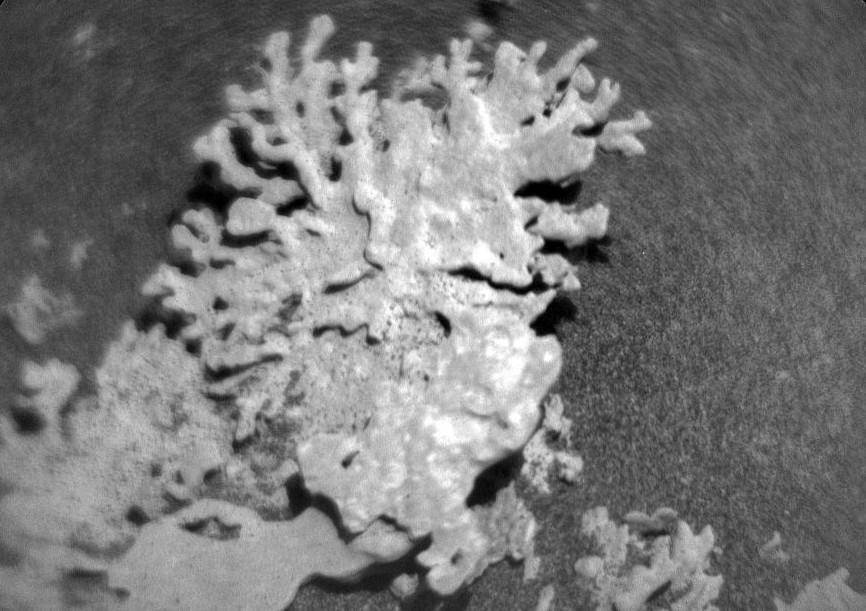
Coral-shaped rock spotted on Mars, NASA shares pic
NASA’s Curiosity Mars rover has been making headlines again, this time with a fascinating discovery that has left scientists and space enthusiasts alike stunned. The rover, which has been exploring the Martian surface since 2012, has sent back black and white images of a rock that bears an uncanny resemblance to a piece of coral. The remarkable find was announced by NASA earlier this week, and the images have been making waves across the scientific community.
The coral-shaped rock was discovered in the Gale Crater, a large impact basin on Mars that is approximately 96 miles (154 kilometers) wide and 2 miles (3.2 kilometers) deep. The crater is believed to have formed around 3.5 billion years ago, and its surface is a vast, barren expanse of sand, rocks, and dust. It’s a challenging environment for any living organism to survive, and yet, the Curiosity rover has found evidence of ancient rivers, lakes, and even an ocean that once existed in the crater.
The coral-shaped rock, which NASA has named “Coral-like Rock,” is estimated to be around a billion years old. According to NASA scientists, the rock is likely a fragment of a larger structure that has been shaped by the harsh Martian environment over millions of years. The rock’s coral-like appearance is due to the presence of minerals such as calcium carbonate, which are common in coral reefs on Earth.
The discovery of the coral-like rock is significant for several reasons. Firstly, it provides further evidence of the complex geological history of Mars, which was once thought to be a barren, inhospitable planet. The presence of ancient rivers, lakes, and oceans suggests that Mars may have once been capable of supporting life, or at least, the building blocks of life.
Secondly, the discovery of a coral-like rock on Mars raises interesting questions about the possibility of life on the Red Planet. Coral reefs on Earth are some of the most diverse and complex ecosystems on the planet, and if NASA’s Curiosity rover has found a similar structure on Mars, it’s possible that there may have been a similar ecosystem on the planet in the distant past.
Finally, the discovery of the coral-like rock highlights the incredible capabilities of NASA’s Curiosity rover, which has been exploring Mars since 2012. The rover is equipped with a range of scientific instruments, including cameras, spectrometers, and a rock-analyzing laser, which allow it to study the Martian surface in unprecedented detail.
The Curiosity rover is a remarkable machine that has been designed to explore the Martian surface for at least two years. However, it has already far exceeded its expected lifespan, and NASA has announced plans to extend its mission until at least 2025.
The discovery of the coral-like rock is just the latest in a long line of exciting findings from NASA’s Curiosity rover. In recent years, the rover has discovered evidence of ancient lakes, rivers, and even an ocean on Mars, which has sent shockwaves through the scientific community.
In conclusion, the discovery of a coral-shaped rock on Mars is a significant finding that provides further evidence of the complex geological history of the Red Planet. It also raises interesting questions about the possibility of life on Mars and highlights the incredible capabilities of NASA’s Curiosity rover.
Source:
https://www.jpl.nasa.gov/images/pia26634-curiositys-chemcam-views-a-rock-shaped-like-coral/
Note: The source URL is the official NASA website, which features a range of images and information about the Curiosity rover and its discoveries on Mars.






